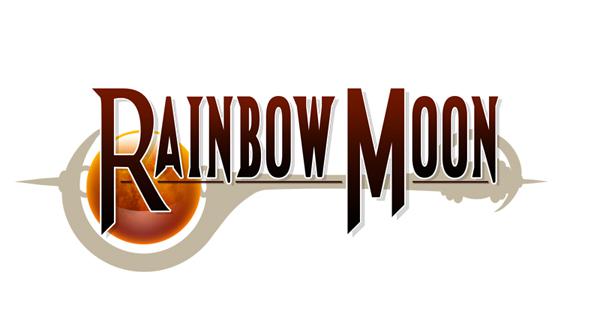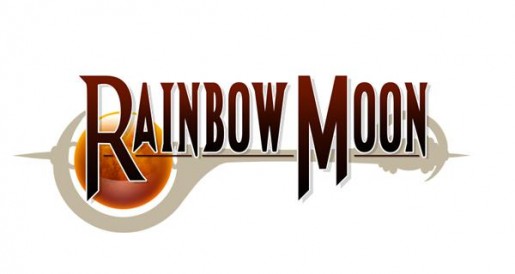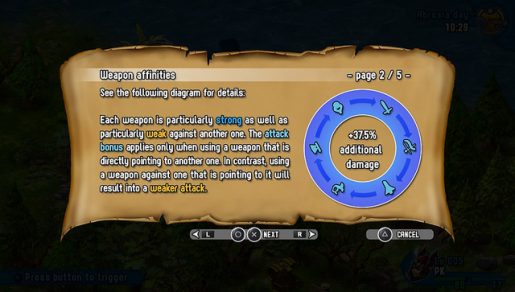SideQuest Studios, the folks that brought the original Rainbow Moon exclusively to the Playstation Network, have been working on enhancing the game and adding a few more features that were left on the cutting room floor the first time around. Fast forward to December 2013 where the strategy RPG has finally seen new light on the Playstation Vita. With new fixes and upgrades, is it worth stepping through the portal a second time?
Combat in Rainbow Moon is largely akin to that of Nippon Ichi’s early release of Rhapsody: A Musical Adventure from years back, with a few more of the modern strategy RPG enhancements. Fights can be initiated either from stationary enemies placed around the map (some disappear forever after being defeated, others return after a few in-game days) or via a constantly refreshing random encounter popup. Either option will bring you into battle in a separate field with a predetermined assortment of enemies. Combat grids are largely sparse of obstacles, although some maps may feature buildings or trees that offer up protection against enemies rushing in (and provide great cover for the archer once you recruit her!). Each fight takes place with a miniature strategy RPG skirmish, perfectly sized for a game on the go.
Early on, a turn only consists of a single action. Actions in Rainbow Moon are comprised of moving a single square, attacking, using an item, etc. As the characters level up, ‘Sub-Turns’ are unlocked that augment that specific character and allow them additional actions. Until the first sub-turn is unlocked, don’t even consider trying to move and attack in the same turn. Also, as the characters get progressively more powerful, enemies encountered will also gain the same sub-turn mechanic, so it’s important not to charge into an enemy group without considering these turns. A simple tactic to keep in mind is to position characters just outside of an enemy’s movement range. That way, the enemy will walk up beside your character and end its turn. letting you wail on them without wasting any of your sub turns to close the gap.
If you recall our original review of Rainbow Moon on the PS3, the level-grinding was a negative point. Sadly, not much else has improved in terms of the grind. If you have already picked up a copy of Rainbow Moon last year, there is a cross-save function to allow you to continue your progress into the Vita release without having to start fresh. If not, you’re in for quite a long ride. Despite battles taking long than standard turn-based titles given the slower nature of a strategy RPG system, the amount of experience gained from combat and needed for leveling up just aren’t quite suited for the game’s bite-sized format. Anticipate spending an hour or two per dungeon just grinding away to get your characters leveled up to a point where the boss won’t knock your whole team down in a turn or two.
One of my major annoyances with Rainbow Moon goes hand in hand with the grinding required by the game. As what I initially thought to be some arbitrary gauge is a foodbar, or simply a hunger gauge. As time ticks by, the bar will slowly deplete until emptied, at which point the character will take constant damage until their hunger is satiated. The only way to refill the gauge is obviously by eating/drinking, either through consumables found throughout the journey or by visiting a local tavern. There’s also a spell available early on to generate potable goods, so there’s rarely any need to manage that bar as food is all too plentiful. I can’t begin to count the number of times I’ve had to waste carrots to fill up one or two percent of my hunger meter just because my inventory was full. This hunger gauge really doesn’t serve much purpose in the game, other than to give one more stat to worry about on occasion. During a lengthy session of grinding away on enemies, that gauge may deplete just far enough to give you a reminder to go back to camp and heal up, but rarely does it serve any other purpose than to annoy.



